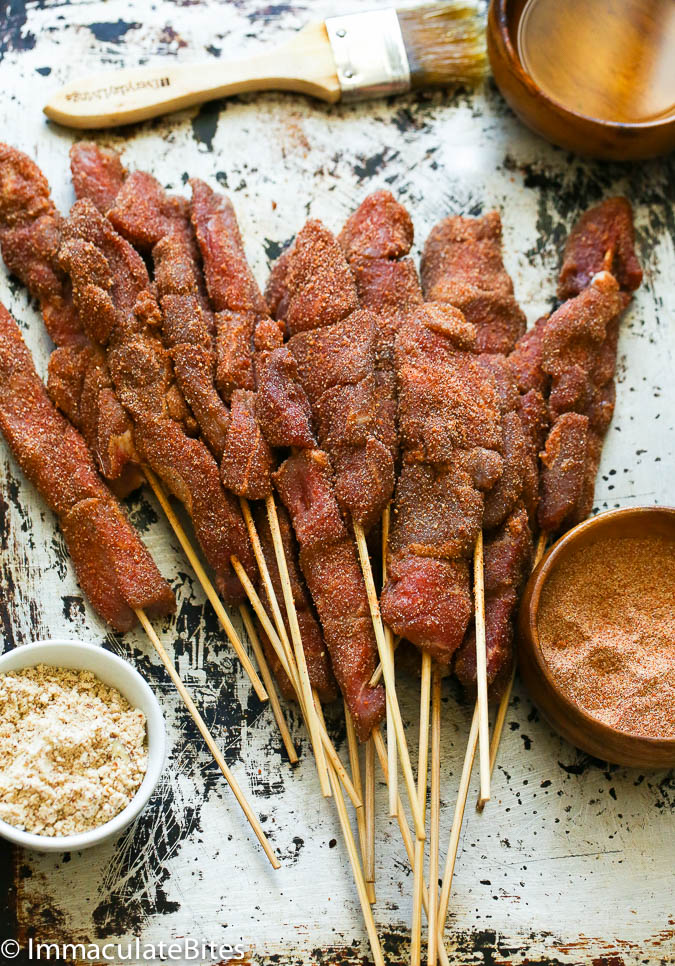
Suya is traditionally steak, and that’s the best here, showing off the full power of the spice. The meat is patted down with the least spicy rub and left to brood for 12 hours, then smoked and grilled. More spice, untempered, is added at the end, which is where the heat comes in.
Squeeze bottles of peanut aioli and over-sweet barbecue sauce stand by, should yet more flavor be required. It isn’t.
Sometimes customers of Nigerian descent balk at all the fuss. “They’re surprised,” Mr. Agwu said. For them, he offers “just suya”: steak with no accompaniment beyond tomatoes and onions, “to cool you off,” he said.
Suya spice has no single recipe, and Mr. Agwu keeps his 16-ingredient formula close. Asked if he used peanuts or kuli-kuli — roasted peanut paste stripped of oil, then fried into gold — he said, demurring: “I can only tell you that there are peanuts in it.”
Mr. Agwu grew up in Lagos, Nigeria, and came to the United States with his family when he was 14, settling on Long Island. “My mother tricked me into cooking,” he said, recalling how he boiled his first pot of rice at age 8.
After graduating from college with a degree in political science, Mr. Agwu ran a suya spot on Long Island for a year, then experimented with pop-up dinners in the city. Eventually he reinvented himself as the Suya Guy, selling suya at festivals where he delivered a Salt Bae-esque flourish of desert-red spice from on high.
He teamed up with Mr. Adeyemo last year and landed at this shallow storefront, once a tattoo parlor and later a high-end hot-dog joint. The mural on the back wall, of the 3 train, persists from an earlier time, along with a red gate at the end of the counter warning: “Do not enter or cross tracks.” (By coincidence, Mr. Agwu recently took a side job as a train operator for the Metropolitan Transportation Authority.)
The Nigerian name for suya spice is yaji, which is how Mr. Agwu labels his theoretically medium-hot mix; mild he calls miya, the word for sauce or spice in Hausa, and hot is ose, pepper in Igbo, both local languages. All are for sale by the jar.
Two even-hotter levels of spice mix, nameless, are hidden behind the counter, their existence disclosed to only a few. “You have to work your way up,” Mr. Agwu said. He prefers ose, but on some days, “if I’m feeling really nostalgic,” he said, he goes for what he calls No. 4.
And No. 5, a “super special order,” which no customer has yet dared to try? He laughed. “Absolutely not.”

